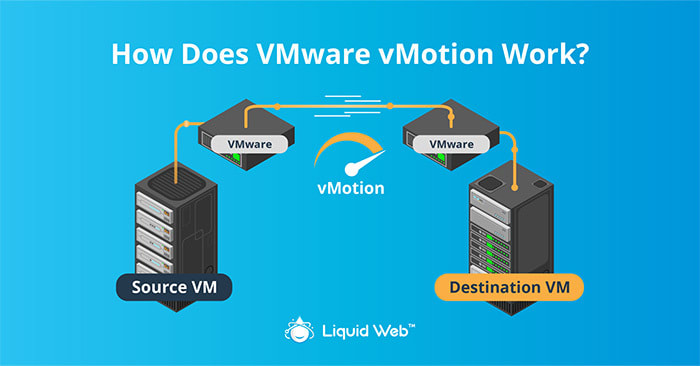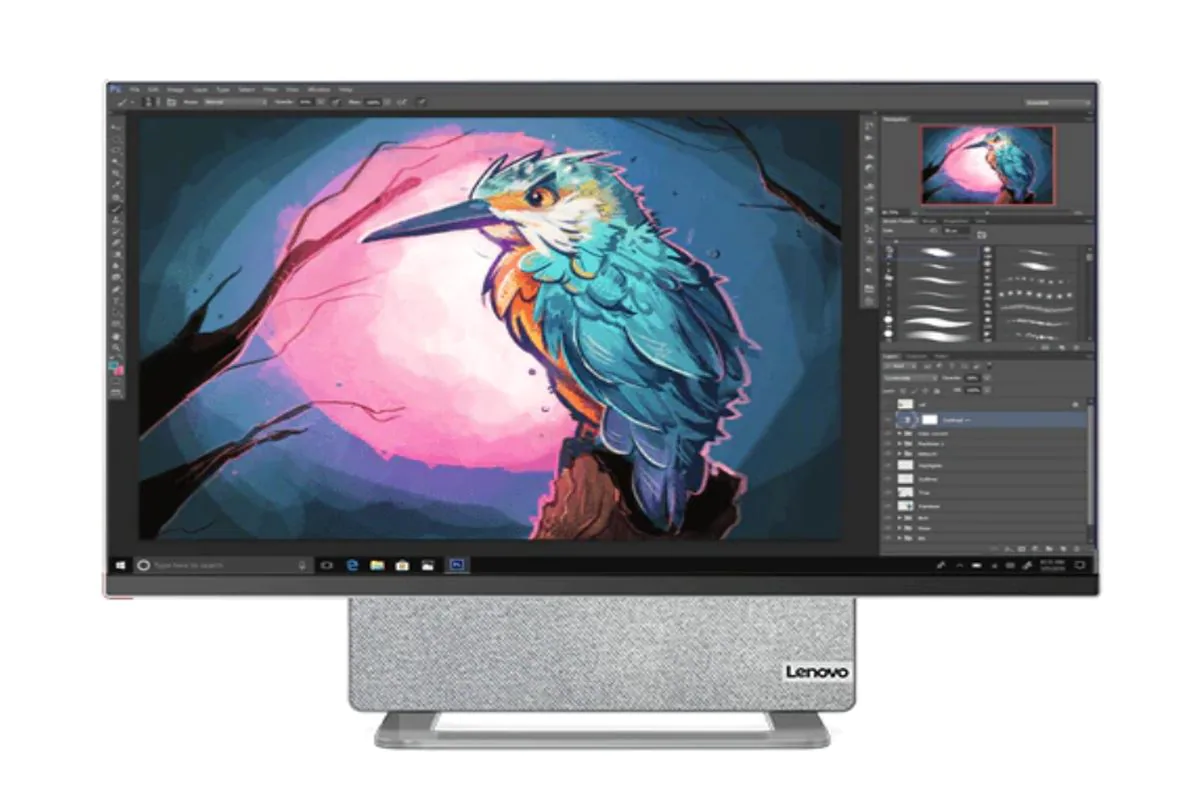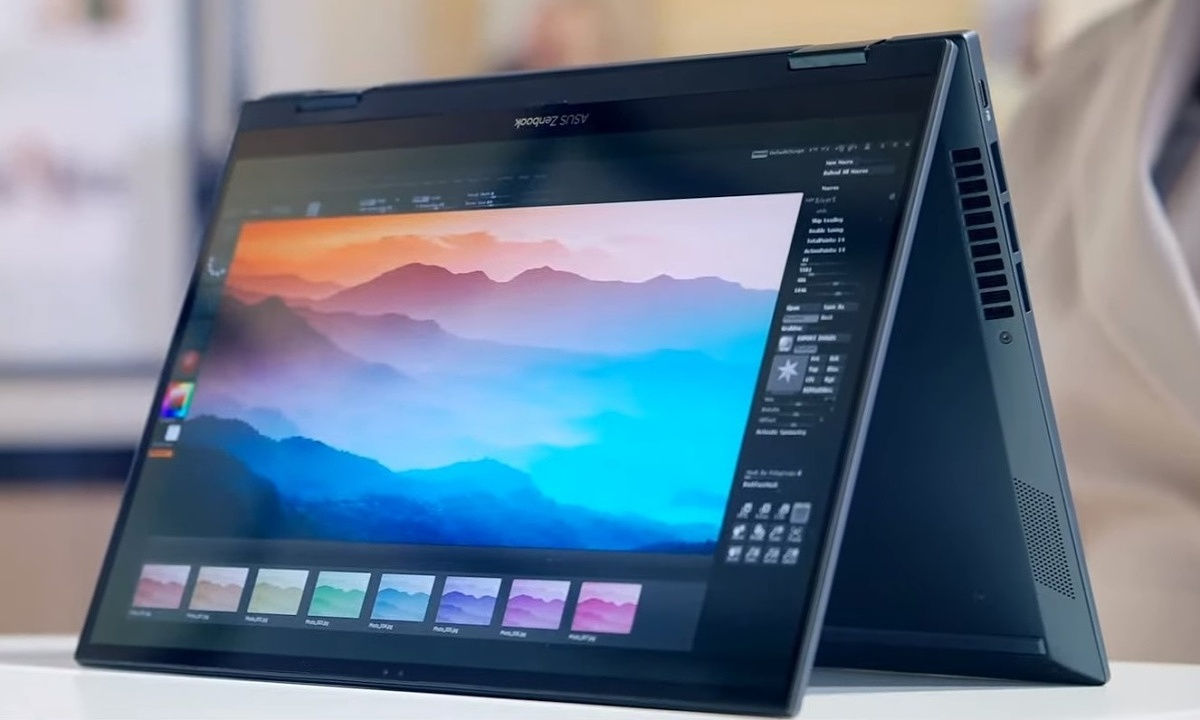
vMotion allows for the live migration of virtual machines (VMs) from one physical server to another without any interruption in service. While this technology has obvious benefits for server downtime, it also provides the technology necessary to fully automate data centers and make them self-sufficient.
How Does VMware vMotion Work?
So, what is vMotion? How does it work, exactly?

The actual process of vMotion relies on a few complex technologies working together. But, before the vMotion process can begin, there is a list of setup procedures IT managers need to follow to make sure your migration runs smoothly.
Your IT team needs to ensure that the network interfaces on both your source and target machines have the proper configuration. The source and target machines will also require a significant amount of bandwidth to complete the migration.
Many IT experts advocate having another network interface controller ready on standby in the event of any failover. You may also want to consider using jumbo ethernet frames to ensure the migration of your data without any failures or interruptions.
Once you’ve started the source and target servers on the right foot with the proper setup, you can begin the migration process. Here is a detailed breakdown of the three technologies that make VMware’s vMotion possible:
- Encapsulation: The vMotion technology can completely replicate a particular virtual machine. This includes any network connections, memory stores, and registers. As long as the state of the original VM exists on a shared file storage platform, it can be encapsulated by vMotion.
- Data Copy and Transfer: During this stage of the process, vMotion will copy the state information of the source VM and transfer it to its target server. This includes all of the information contained within the VM and any specific execution parameters. The entire transfer process occurs in a matter of seconds across a high-speed data network. vMotion will keep track of memory transactions in a bitmap file and copy them to the destination when the data transfer is complete. Operations on the source VM will be suspended, and the VM’s processes can be resumed on the target host without skipping a beat.
- Preservation: vMotion’s entire process is occurring on virtualized networks. As a result, important VM attributes like network identity and connections can be preserved during transfer. VMware makes this possible by using media access control (MAC) addresses. VMware’s vMotion technology assigns each VM within a host machine its own MAC address. Once VMs are transferred to the target machine, vMotion pings the network router to let the host machine know of the new location of the system VMs via their virtual MAC addresses.
Why Would You Need vMotion?
Imagine being able to perform maintenance tasks without having to schedule downtime. Downtime is unavoidable whether you’re using a dedicated server or managed private cloud. But vMotion allows virtual machines (VMs) to remain live during migration which, in turn, minimizes downtime and interruptions while maximizing server performance in comparison to other types of virtualization.
Advantages of vMotion
In addition to downtime benefits, your team will also see other advances in the optimization of your data center like the ability to pool large groups of resources together and maximize hardware utilization. You’ll also be able to prevent large-scale interruptions or data loss by being able to proactively migrate VMs away from legacy machines that may be approaching failure or devices that habitually underperform.
In short, using vMotion provides your IT estate with increased availability, scalability, flexibility, and asset optimization.
Ease of Scalability
It’s worth noting that scalability is a huge consideration for any solution to ensure sustainable growth and future-proofing when adapting to changing needs. This is especially true for larger IT environments who may be faced with a necessity to migrate countless VMs.
The good news is that one significant advantage vMotion offers is its relative ease of scalability. While scalability will go a long way towards improving overall maintenance, you can rely on a scalable infrastructure through the use of vMotion.
vMotion in Action
To help you better understand why you should consider implementing vMotion in your IT room or data center, here are three real-world scenarios where it can improve the performance of your digital presence.
1. Improved Maintenance
We mentioned earlier how downtime is unavoidable when managing your company’s IT assets. We can’t always prevent downtime as IT professionals, but we do want to minimize it whenever possible.
Even though downtime for maintenance is typically scheduled, it can still be disruptive. vMotion allows you to continue the regular software updates necessary for IT equipment without sacrificing functionality. As an IT manager, you’ll be able to easily migrate your most mission-critical VMs to another location, so they aren’t affected by maintenance tasks and downtime.
2. Avoid the Impact of Severe Weather
The one thing we can all predict about the weather is that it’s unpredictable. Savvy IT managers prepare for this by migrating essential data to other locations to prevent data corruption or loss. vMotion improves that process by allowing for wireless, long-distance data migration.
The result? IT managers can migrate important files and network connections several hundred, even thousands of miles away to avoid the drastic impact of a severe weather event.
While this is a valuable tool for IT managers, it’s still important to prepare. Your data will only move as fast as your network speed allows. Make sure you’re providing enough bandwidth for your migration and test its efficiency before it needs to go live as part of your disaster recovery plan.
3. Tap into the Cloud
Having the ability to migrate live VM data virtually allows you to fully discover the power of cloud technology. Using vMotion, you’ll be able to migrate VMs to a public cloud as a way to expand your data capacity to meet peak and seasonal storage demands.
Disadvantages of vMotion
Although VMware’s vMotion is a truly innovative technology, it does have some limitations:
- vMotion doesn’t support a mixed IP environment. The host and target machine must have matching IP address families for migration to work.
- vMotion struggles with servers that use raw device mapping (RDM) to cluster virtual applications.
- If virtual CPU performance counters are enabled, vMotion can only perform migrations to machines with similar CPU performance counters.
How Many Types of vMotion Are There?

There are three major types of vMotion: vMotion, Storage vMotion, and Enhanced vMotion. Each type has its own individual features which we’ll break down below.
1. vMotion
By now, we’re familiar with standard vMotion’s ability to afford IT managers with decreased server downtime. However, it’s important to note that this type of vMotion relies on a shared storage platform to be effective.
If used properly, this form of vMotion allows you to perform regularly scheduled updates and maintenance without losing server functionality. You’ll also be able to better manage your processing payload by distributing the work across multiple host machines.
2. Storage vMotion (svMotion)
Storage vMotion allows for migration across data stores that exist on the same host machine. Your machine must have access to both the host and target data stores to perform this type of migration.
What is storage vMotion best for? The main advantages over other forms of vMotion are more precise storage inventory management, improved disk provisioning, downtime reduction, and more efficient, balanced server performance.
3. Enhanced vMotion
Enhanced vMotion is a combination of the two previous types. This migration method allows you to migrate data stores from machine to machine, as well as among VMs existing on the same host. Enhanced vMotion doesn’t require shared file storage to function, which is a significant benefit.
Can You Move a VM Without vMotion?
vMotion is an excellent solution for IT managers wanting to migrate VMs for various reasons. But what if you don’t have vMotion available, or you’re relocating data for a one-off special project? Can you move a VM without vMotion?
The short answer — Yes.
It’s entirely possible to migrate a VM without vMotion. VMware is a useful tool, but other solutions are available to help you migrate your data stores. Open-source platforms like Veeam give IT professionals a free platform to perform quick migrations in scenarios where vSphere migration methods may not be available. Just be sure to do your research, as using these types of platforms does have its own limitations.
vMotion Best Practices
Here are some steps you and your team should consider to provide the best environment for vMotion data migrations:
- Make sure your network connection and speed can support the transfer of VM data. You’ll also want to test network latency if you’re choosing to migrate VMs across long distances.
- Make sure your backup and restore procedures are up-to-date before initiating migration.
- Keep all peripheral appliances/devices powered off or at low activity while conducting data store migration.
- Provide an additional network interface card (NIC) as a failover.
- Use jumbo frames for the best migration performance.
- Use a dedicated default gateway that’s different from the IP gateway on the management network.
Liquid Web is Your vMotion Partner
Now that you’re familiar with what vMotion in VMware is and what it does, you may want to begin implementing it in your server room or data center. If that’s the case, Liquid Web can help.
Our VMware experts can help you set up your system to handle vMotion migrations without skipping a beat. Let us show you how we can save your team time and money by freeing up your IT assets for autonomous management and optimization.
[ad_2]
Source link







